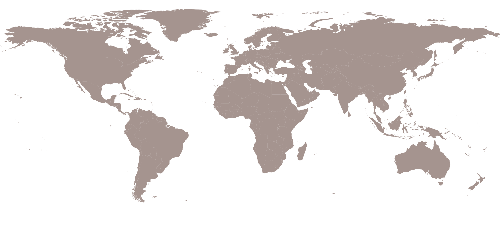Shifting the Flows, Pulling the Strings
Stocks, flows, and their dynamics
Built environments need not necessarily be perceived as a problem per se, but instead could be understood as a stepping-stone toward potential solutions. As sociologist Thomas Gieryn has argued, buildings can do much more than provide shelter, offer security, or generate income. “Buildings do all that, and much more.”(1) The construction and operation of buildings or infrastructure are often resource- and emission-intensive(2) but can just as well serve as opportunities for reducing, even storing carbon emissions and stockpiling material resources for future use.
To harness inherent, yet untapped opportunities of the building stock as a more robust resource, it is essential to have a fundamental understanding of its material vitality. The concept of urban metabolism is crucial to such an understanding with regard to urban systems and the quantification of flows in and out of cities,(3,4, 5) yet this conventional focus must be expanded to encompass multiple interdependencies among manifold physical flows and anthropogenic processes across space and time.(6)
Moderators, Speakers & Respondents
-

Speaker
Keisuke Hanaki
Tokyo University
Japan
-

Speaker
Stefanie Weidner
Institute for Lightweight Structures & Conceptual Design (ILEK), University of Stuttgart
Germany
-

Respondent
Charlotte Malterre-Barthes
Swiss Federal Institute of Technology (ETH Zurich)
Switzerland
Abstracts
- Human needs indoors: Resources from the sky | Marilyne Andersen | Full Professor of Sustainable Construction Technologies and Head of the Laboratory of Integrated Performance in Design (LIPID), Swiss Federal Institute of Technology (EPFL Lausanne), Switzerland
- Children’s recreational center in Juchitán Oaxaca | Loreta Castro | Design Director & Founder, Taller Capital, Mexico
- Subsurface environments | Ruchi Choudhary | Reader in Architectural Engineering, Department of Engineering, University of Cambridge, United Kingdom
- Regenerative technologies towards the sustainable development goals | Guillaume Habert | Professor of Sustainable Construction, Swiss Federal Institute of Technology (ETH Zurich), Switzerland
- Internet of things (IoT) for filling the time gap in slowly changing urban form | Keisuke Hanaki | Professor, School of Information Networking for Innovation & Design, Tokyo University, Japan
- Enhancing livability through resource efficiency: an urban metabolism study in Cairo | Heba Allah Khalil | Professor of Sustainable Urbanism, Department of Architecture, Cairo University, Egypt
- Whole-ecosystem buildings as living organisms | Christoph Küffer | Professor of Urban Ecology, Department of Landscape Architecture, University of Applied Sciences of Eastern Switzerland, Switzerland
- The light house | Stephen Lamb | Designer and Founder, Touching Earth Lightly, South Africa
- Unveiling the key levers of cities material & energy consumption and emissions | Serge Salat | Founder & President, Urban Morphology & Complex Systems Institute, France
Cities manifest complex systems in which natural and human processes interact to fabricate an environment that in turn has its own innate physical dynamics. Understanding the multi-scalar dimensions of these dynamics to identify leverage points toward more sustainable urban systems will be the core focus of the workshop.
During this workshop we will explore four nested, interrelated temporal dynamics. The natural cycles that are daily or seasonal interact with bio-based material production and energy use patterns. The building life cycle, understood in terms of material use in buildings, operations, and demolition/recycling, represents still another cycle that typically spans from several decades to even centuries. Humans too are bound by certain cycles. Changing lifestyle patterns across different stages of individual and collective lifespans has different resource and environmental implications, as does the changing demographic profile. And finally, cities evolve over time, growing rapidly or shrinking due to socioeconomic, resource-related, or environmental factors as well as particular policy and planning decisions.
Can we better integrate these compound dynamics conceptually and analytically, while examining their practical implications for material and energy flows? How do changes in a specific flow influence another? Can multi-scalar understandings of material and energy flows and their roles in powering the dynamics of cities be used to pull the strings and reorient the course of our socio-technical world? The workshop “Shifting the flows, pulling the strings: Stocks, flows, and their dynamic” will accordingly explore potential paths toward sustainable urbanization and urban regeneration.
References
- 1 Thomas F. Gieryn, “What Buildings Do,” Theory and society 31 (February 2002): 35-74.
- 2 Bai, X., Dawson, R.J., Ürge-Vorsatz, D., Delgado, G.C., Salisu, A.B., Dhakal, S., Dodman, D., Leonardsen, L., Masson-Delmotte, V., Roberts, D.C. and Schultz, S., 2018. Six research priorities for cities and climate change. Nature, 555(7694), pp.23-25.
- 3 Wolman, A., 1965. The metabolism of cities. Scientific American, 213(3), pp.178-193.
- 4 Newcombe, K., Kalma, J.D. and Aston, A.R., 1978. The metabolism of a city: the case of Hong Kong. Ambio, pp.3-15.
- 5 Pincetl, S., Bunje, P. and Holmes, T., 2012. An expanded urban metabolism method: Toward a systems approach for assessing urban energy processes and causes. Landscape and urban planning, 107(3), pp.193-202.
- 6 Bai, X., 2016. Eight energy and material flow characteristics of urban ecosystems. Ambio, 45(7), pp.819-830.

































